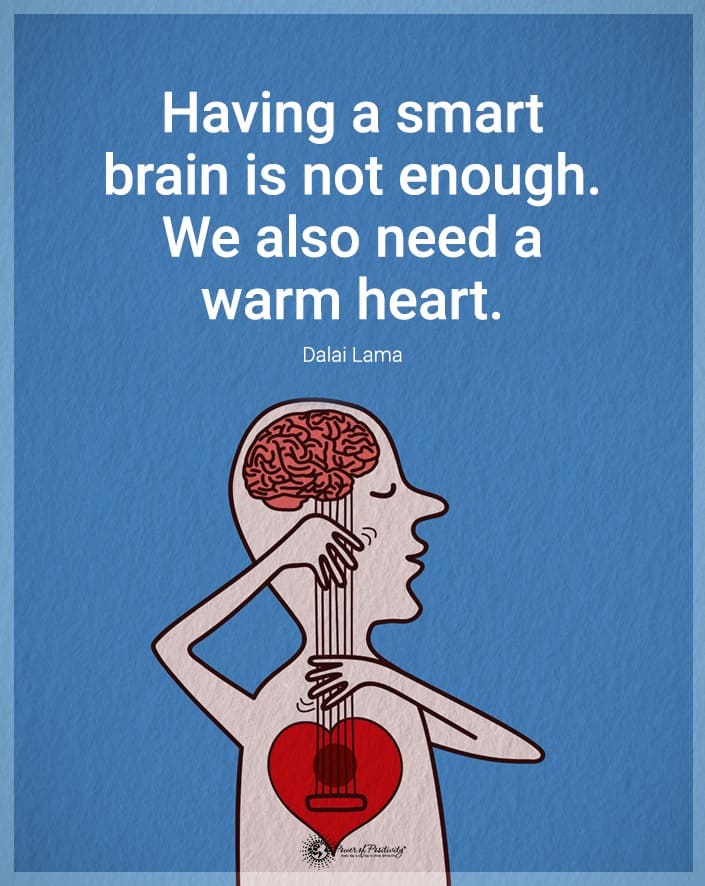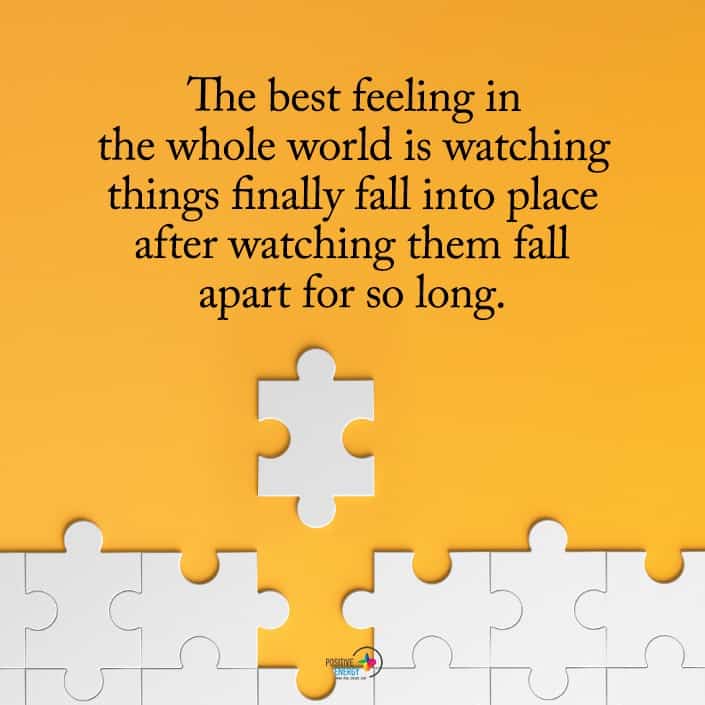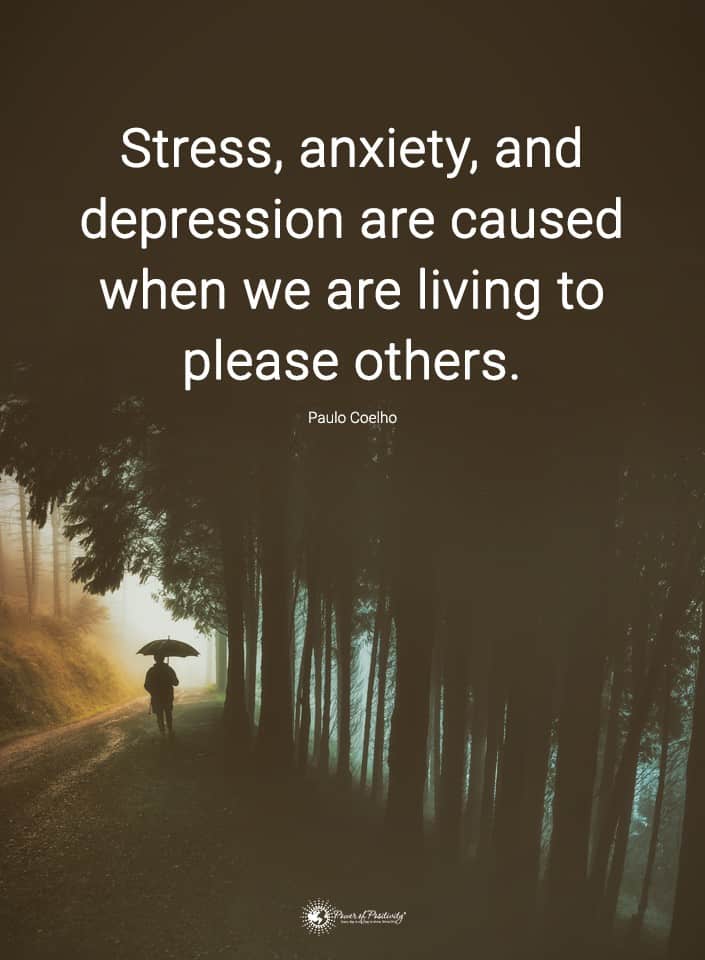Do you ever feel like your life is spinning out of control? Or do you ever feel like the only way you can maintain control over it is by changing nothing? Maybe you feel pressured to maintain a status quo or follow other factors to control your life?
Regardless of which statements best fits you, the fact remains that it can feel challenging to captain your life well sometimes. This roadblock often happens because there are numerous things that you’re allowing to take the wheel. In reality, you should be the one who has the final say! Don’t let these five things control your life and future happiness.
1. The Opinions Of Others Can Control Your Life
Many people put way too much stock into the opinions of others. We want the validation and approval of the people around us.
This is especially true because social media has opened us up to a constant influx of external opinions. Each post on social media garners attention can cause you to lose a sense of what matters as you chase “likes” and comments.
It’s not unusual to desire this extrinsic reassurance, even if it’s not the healthiest. Lots of people want those around them to approve of them. But that doesn’t mean you should allow yourself to fall into this trap! This is because:
- It’s not possible to please everyone in life. Someone will always disapprove of your decisions!
- The people who matter most in your life will accept you as you are, allowing you space to grow and learn.
- Pleasing other people can deplete your authenticity, causing you to lose touch with yourself and dislike your genuine identity.
- A lot of groundbreaking thought and action requires the desire to go against the grain, which is impossible to do when trying to conform to social norms.
- Being overly concerned with what other people think can open you up to the risk of toxic relationships.
- Only you have to live with yourself, ultimately. Others may be temporary in your life, but you’ll be with yourself forever!
The fact is that absolutely no one other than yourself should get to control your life. Sure, you can take other people’s feedback and advice into account. And if you share your life with a partner, you need to discuss things with them when they’ll affect both of you. But the direction of your life and your dreams is entirely up to you at the end of the day.
2. The Situation You’re Currently In May Control Your Life
Everyone goes through multiple stages and phases in their life. Each one you go through can feel so real that you start to believe it’s permanent. You lose hope and stop considering a better future because you think this is as good as it gets.
Instead of taking steps to improve your situation, you remain static. You forget that this is just one chapter of your life and that you have to turn the pages to get to more of the story! Better yet, it’s a story you get to write. Why wait?
Of course, there’s nothing wrong with a bit of realism. Your goals shouldn’t be so impossible that they only discourage you. And you do need to take into account your current life when you make plans for steps to take to move towards your dreams. But the very last thing that your current situation should do is completely control your life.
Remember, you’re the captain of the ship! And although you can’t always predict the pattern of the waves and the upcoming storms, you can prepare for bad weather and take the wheel when things get rough. It’s all, ultimately, up to you! Here’s how to healthily stop letting your current situation control your life:
· Don’t Wait Around
Stop waiting for the perfect moment; there’s no such thing! You’ll never be in the exact right situation where all the cards fall into place, and the planets align. You have to go for something and take steps wisely but bravely!
· Keep Growing
Don’t ever stop learning and bettering yourself. If you can’t change your immediate circumstances, change yourself for the better. Slow down, focus on things that matter, and address your issues. The more you learn, the more equipped you’ll be for the future.
· Get Accustomed To Change
Accept that change is constant, and you cannot avoid it. Resisting change only makes it harder to adapt, so why not facilitate some change yourself? Be grateful for change and acknowledge the space it gives you to grow and learn. The end goal is to welcome and be excited about change, too!
3. Self-Limiting Beliefs Might Control Your Life
Self-limiting beliefs are thoughts related to self-esteem and a lack of confidence in yourself. Unfortunately, a lot of these beliefs are subconscious. This means that the beliefs are innate and buried into your mindset. They control your life without you even being aware that they exist and that they’re hurting you. These unconscious beliefs can be a result of:
· Poor Past Experiences
Many deeply rooted beliefs come from somewhere, mostly from childhood or from abusive or toxic situations. After all, no one naturally comes into the world thinking they’re no good. These ideas must be taught and enforced, so they come from somewhere!
· Negative Cycles
Repeated cycles of negative emotion and negative self-talk reinforce and strengthen self-limiting beliefs. They control your life by blurring your thinking and keeping you stuck in poor thoughts and bad feelings. These emotions are unhealthy when they dominate you and detract from the possibility of positivity. Spiteful action, revenge, jealousy, anger, and hatred are all examples of beliefs that can drive negative cycles. Poor self-esteem, anxiety, and a lack of confidence are also common culprits.
· Fear
Fear is a compelling thing. It can keep you stuck and reluctant to move forward to a paralyzing degree. You’re afraid of failure or afraid of judgment, or you’re scared that you don’t have the skills needed to succeed. This fearfulness causes you to stay within your comfort zone, never leaving it and therefore never growing. Your future happiness never arrives because this fear will control your life and keep you stuck!
Unlearning your self-limiting beliefs is incredibly difficult, but it’s doable. Learn positive self-talk, self-compassion, and self-confidence. Each is a crucial step in improving beyond this point. Even the most deeply-rooted beliefs can be dug out if you’re willing to put the work in!
4. Money May Control Your Life
Money sure makes the world go round! It’s hard to let it control your life when you need cash in your everyday life to sustain yourself well. The fact is that this is what the world functions on, and the stability of financial security is sought after by many.
But here are the facts: money isn’t going to successfully guarantee your future happiness if it’s the only thing that drives you. Money isn’t going to make you feel happy or fulfilled. Just improve your circumstances. It’s okay if your goals involve some degree of financial gain, but it shouldn’t be the only thing that drives you.
A life lived solely for financial pursuit is typically devoid of purpose and meaning. Material items and possessions aren’t what the human brain works best on. They provide short bursts of reward-fueled dopamine, but that makes you want more and more until you’re always dissatisfied.
Again, it’s okay to want better stability, and we can’t deny that it’s much better to be financially secure than struggling from paycheck to paycheck! But don’t let that be the sole factor in all the decisions you make. Doing something you hate for the sake of more money isn’t a mentally sustainable or emotionally healthy option for the rest of your life. Learn to strike a balance between the extremes!
5. Your Past Mistakes May Control Your Life
The mistakes you’ve made in your past can be painful to look back on. And they’re not ones you should necessarily “forget.” After all, each mistake is an opportunity to learn and grow! But there’s a difference between using your mistakes as lessons and simply allowing them to control your life.
The past is in the past. If it continues to haunt you to this day, it’s not staying in the party of time where it should. And if it ruins your future happiness, then it’s being held onto at an unhealthy degree! Your past shouldn’t be a significant factor in where you want your future to go. If it is, you’re wasting time, effort, energy, and your life. You can’t go back and change what has happened, after all.
This is where mindfulness comes into play. This is the act of remaining present and grounded in the current world. It allows you to let go of worries for the future, pain from the past, and other factors that influence your perception of your present and possible future. This is why it’s so important to learn to let go of past pain. Releasing that weight grants you freedom so you can move forward without it controlling you.
Your past should make you stronger, not weaker. So no matter what, stay present and be present. Learn from your mistakes and experiences, then press forward. If you need help releasing complex trauma, you can seek aid from a therapist or similar mental health professional.
How To Let Go Of The Past:
In the meantime, you can start releasing your past mistakes by:
- Learn from them and thank them for the lessons they have taught you.
- Remember that you’ve proven yourself and become stronger because of those mistakes.
- Understanding that your past doesn’t define your future and shouldn’t define who you are.
- Allowing yourself the permission to feel the complex emotions associated with mistakes so that you can process them.
- Taking life one step at a time.
- Boosting your confidence in your capabilities to overcome mistakes and not repeat them.
Final Thoughts On Some Things That Control Your Life and Future Happiness
Your life is up to you. Each decision you make is within your control. Given how unpredictable life is and how many things you can’t control, it’s more important than ever to ensure nothing else steals your autonomy. Don’t let something that should have no say over you control your life and future happiness!




















